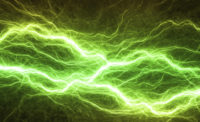The explosion that burned six workers at Priest Rapids Dam in central Washington on October. 8 was the result of an electrical heat wave called an “arc flash,” Grant County PUD officials have confirmed.
All the injured received serious burns.
Two of the six workers remain at Seattle’s Harborview Medical Center. One remains in serious condition in intensive care but is awake and alert, hospital spokeswoman Susan Gregg said. The condition of the other has improved from critical to serious, she said.
Both of the men are in their 40s and undergoing burn surgeries, she said.
Editor’s note: Both men were eventually released from the hospital.
The employees were in the vicinity of the dam’s P8 generating unit, when the main breaker that turns the unit on or off failed, causing the arc flash explosion, PUD spokesman Chuck Allen said last week.
An arc flash is a phenomenon where an electric current leaves its intended path and travels through the air from one conductor to another, or to the ground, according to workplace safety bulletin on the Occupational Safety and Health Administration (OSHA) website.
The flash superheats the air. Danger to workers depends on their proximity to the flash, the temperature generated and the duration of the flash, the bulletin says.
Grant PUD has not released the names of the victims. The PUD and the state Department of Labor and Industries are investigating the incident. It may be several weeks or months to determine what caused the blast, Allen said.
“When you have that much electricity, it heats up the air and creates a wave of heat,” Allen said. “Anyone who is near it is going to be burned, and could be burned severely, which is what happened here.”
The voltage through the breaker that failed ranges from 13 to 14 kilovolts, Allen said. That’s about 100 times the voltage of a common household outlet.
“The breaker will be inspected, so we can understand what led to the arc flash,” Allen said. “It’s not a normal thing that happens with these breakers.”
Heat at the core of the flash can be upward of 35,000 degrees, the OSHA bulletin says. The flash can also cause an explosive sound similar to a gunshot.
Arc flashes can be caused by dust, dropping tools, accidental touching, condensation, material failure, corrosion or faulty installation, the bulletin says.
“Because of the violent nature of an arc flash exposure, when an employee is injured, the injury is serious,” the bulletin says.
Source: www.tri-cityherald.com



